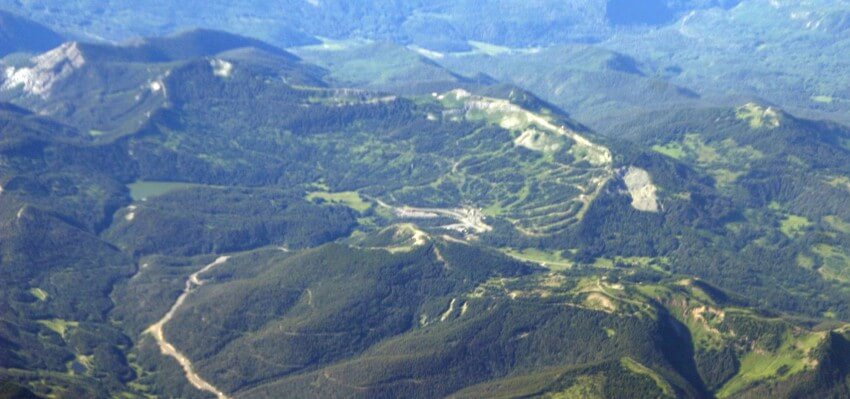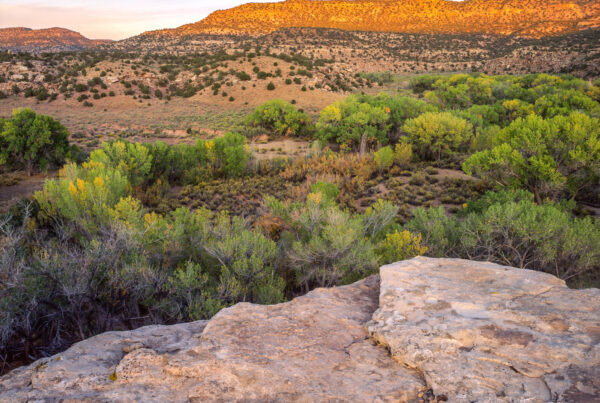By law Environmental Impact Statements are intended to be robust and transparent. Very little in the nearly 30-year saga of the proposed Village at Wolf Creek Pass has met those expectations.
Sadly, 2015 has been no different. Today the Forest Service amended and finalized it’s Record of Decision granting the Wold Creek Land Exchange. They did so without independent review and continue to conceal 13,000 pages related to the undue influence and manipulation of the analysis in violation of a Federal Court Order. The exchange violates the Southern Rockies Lynx Amendment and the Forest Service admits to ‘appreciable’ impacts to Rocky Mountain Elk.
This decision was based on a flawed analysis and the public deserves full transparency to understand why this decision was not made in the public interest.
See our full joint press release below.
For Immediate Release:
March 26, 2015
Matt Sandler, Attorney, Rocky Mountain Wild, matt@rockymountainwild.org, 303-579-5162
Christine Canaly, Director SLVEC, slvwater@fairpoint.net, 719-589-1518
Jimbo Buickerood, San Juan Citizens Alliance, jimbo@sanjuancitizens.org, 970-560-1111
Monique DiGiorgio, Executive Director, Chama Peak Land Alliance, chamapeak@gmail.com, 970-335-8174
Forest Service Issues Final Decision Granting Wolf Creek Land Exchange: Agency ignores court orders and continues to illegally conceal 13,000 pages of emails related to undue influence and manipulation of the analysis
GOLDEN, CO — The Forest Service, amending and finalizing its Record of Decision, is paving the way to provide Texas billionaire Red McCombs with public land to develop the private inholding known as the “Village at Wolf Creek.” The Forest Service has largely ignored concerns raised by numerous organizations and individuals that continue to plague this decision. A large part of this controversy centers around how the Forest Service has illegally limited its National Environmental Policy Act decision making process by narrowing the scope of impacts and options it analyzed and disclosed to the public and decision makers.
In order to understand how the Forest Service made this decision, Rocky Mountain Wild (RMW) filed a Freedom of Information Act (FOIA) request on two separate occasions (February and November, 2014), requesting correspondence between the Forest Service, other agencies, the project proponent, and the consultants hired by the developers. The Forest Service has gone to great lengths to conceal the communications that altered the structure and narrowed the scope of the environmental review. The Forest Service is in open violation and defiance of a Federal Court Order requiring weekly releases of these documents during May.
The Record of Decision (ROD) released today, is also wrought with internal conflict since the reviewing officer for the Objections, Maribeth Gustafson, Deputy Regional Forester, was also heavily involved in developing the Environmental Impact Statement (EIS) content, the draft decision, the objection response, and most likely, the Final Decision itself. The Forest Service has not subjected these decisions to independent review within the agency. Documents obtained in Freedom of Information Act (FOIA) litigation confirm that Ms. Gustafson served as reviewing officer of her own decision.
“Without federal judges enforcing our FOIA rights, nobody would know that the Forest Service selected Ms. Gustafson to conduct a superficial review of objections. The obvious conflict of having Deputy Forester Gustafson resolve the objections on a process she oversaw confirms that the Forest Service has not provided an independent review,” states Matt Sandler, Attorney representing Rocky Mountain Wild. “Many of the same problems involving undue influence and bias that resulted in an Injunction last time have still not been addressed. It seems Federal Court is the only place our comments and objections will get a fair and independent review. These documents, and discussions with agency personnel, provide evidence that the developers continue to exert undue influence over this project, particularly through the Forest Service’s Denver office. ”
Portions of the National Forest are being provided to a development group led by Red McCombs that plans to construct a city the size of Aspen, housing 6,000-10,000 people, rotating through 1,700 units. This high-altitude location receives an average of 428 inches of snow annually, and is an important wildlife corridor for many species. This development has been at the center of controversy since 1986 when the Forest Service first confirmed that the Village proposal and land trade would not serve the public interest.
This Forest Service Decision gives the Forest Supervisor permission to trade approximately 205 federal acres for 177 acres of private land within the boundaries of the Rio Grande National Forest. As a part of this exchange, the U.S. Government is also paying Texas billionaire Red McCombs $70,000 as a “cash equalization payment.” The land exchange intends to connect the private land to U.S. Highway 160, thus securing the ability for a larger population to access the developer’s private inholding.
Instead of repairing flawed analysis from the draft ROD, Rio Grande Forest Supervisor Dan Dallas uses the Record of Decision to justify why he did not and will not follow existing Lynx protections in deciding to approve the land exchange. Conservation groups identified the lack of lynx protections in their Objection to the Forest Supervisor’s decision to promote and approve the land exchange.
“This land exchange decision violates the Southern Rockies Lynx Amendment and the planned development is in the middle of a lynx corridor that connects habitat critical to lynx survival and recovery,” said Christine Canaly, Executive Director of the San Luis Valley Ecosystem Council.
The Colorado Division of Wildlife (CDOW) successfully reintroduced lynx to the Southern Rockies beginning in 1999, selecting the San Juan Mountains core area as the reintroduction site owing to its status as the largest contiguous block of high quality lynx habitat in Colorado. Wolf Creek Pass bisects the San Juan Mountains core area and consequently serves as the principal linkage for lynx moving between the South San Juan Wilderness and the main body of the San Juan Mountains core area. CDOW has documented heavy usage of the Wolf Creek Pass linkage by lynx since reintroduction, and considers it as vital to the recovery of lynx in Colorado.
“It will forever compromise and destroy good lynx habitat and impair the chances for this threatened species to recover to a full, secure population in Colorado. The Forest Service response has already confirmed that the development is not compatible with the lynx,” noted Canaly.
No attempt was made to address concerns of opponents to the land exchange, who continue to point out that the Environmental Impact Statement (EIS) that provides the basis for the Forest Service decision is inadequate and incomplete. The records obtained through FOIA confirm that undue influence on the analysis was key to allowing the developer’s proposal to remain too vague and conceptual to support a full analysis of the anticipated impacts. Concealment of the real impacts of the project has defined the Forest Service handling of the proposal since 1986.
“How is this decision in the public interest? The Forest Service’s Record of Decision and Objection review refuses to acknowledge their legal standing to curtail this grotesque project and is relying on Mineral County to protect federal lands through zoning,” adds Jimbo Buickerood, Public Land Coordinator for the San Juan Citizens Alliance. “Maintaining the integrity of the National Forest on Wolf Creek Pass is not just important to lynx, it is important to skiers, hunters, fishers, tourists, and residents who enjoy this unique landscape. The Forest Service is committed to accommodating the developer’s demands, even though the Forest Service admits that impact on Rocky Mountain Elk would be ‘appreciable.’”
“Climate change is reducing snow pack in western North American mountains and shifting distribution of forests northward and up mountain slopes. High elevation linkage zones like Wolf Creek Pass, known for its concentration of snow pack, will become critical areas to maintain and protect water quality and supply for our south western rivers and agricultural lands. We need these intact ecological zones to be able to buffer and adapt to changing conditions in order to maintain our water quality and wildlife habitat that are critical economic drivers to local, rural communities,” said Frank Simms, Chair of the Chama Peak Land Alliance. The Chama Peak Land Alliance are conservation minded private landowners working collaboratively to practice and promote ecologically and economically sound land management in the southern San Juan Mountains of Colorado and northern New Mexico. These landowners responsibly manage and cooperate with partners on 1.4 million acres of land directly south and adjacent to the Wolf Creek Pass Linkage, creating a continuous, intact landscape being managed with conservation in mind.
Other Wolf Creek Posts
Forest Service ignores objections to land exchange at Wolf Creek Pass
Forest Service paves way for pillage at Wolf Creek
Wolf Creek development enters act 5
Wolf Creek village battle rages on




